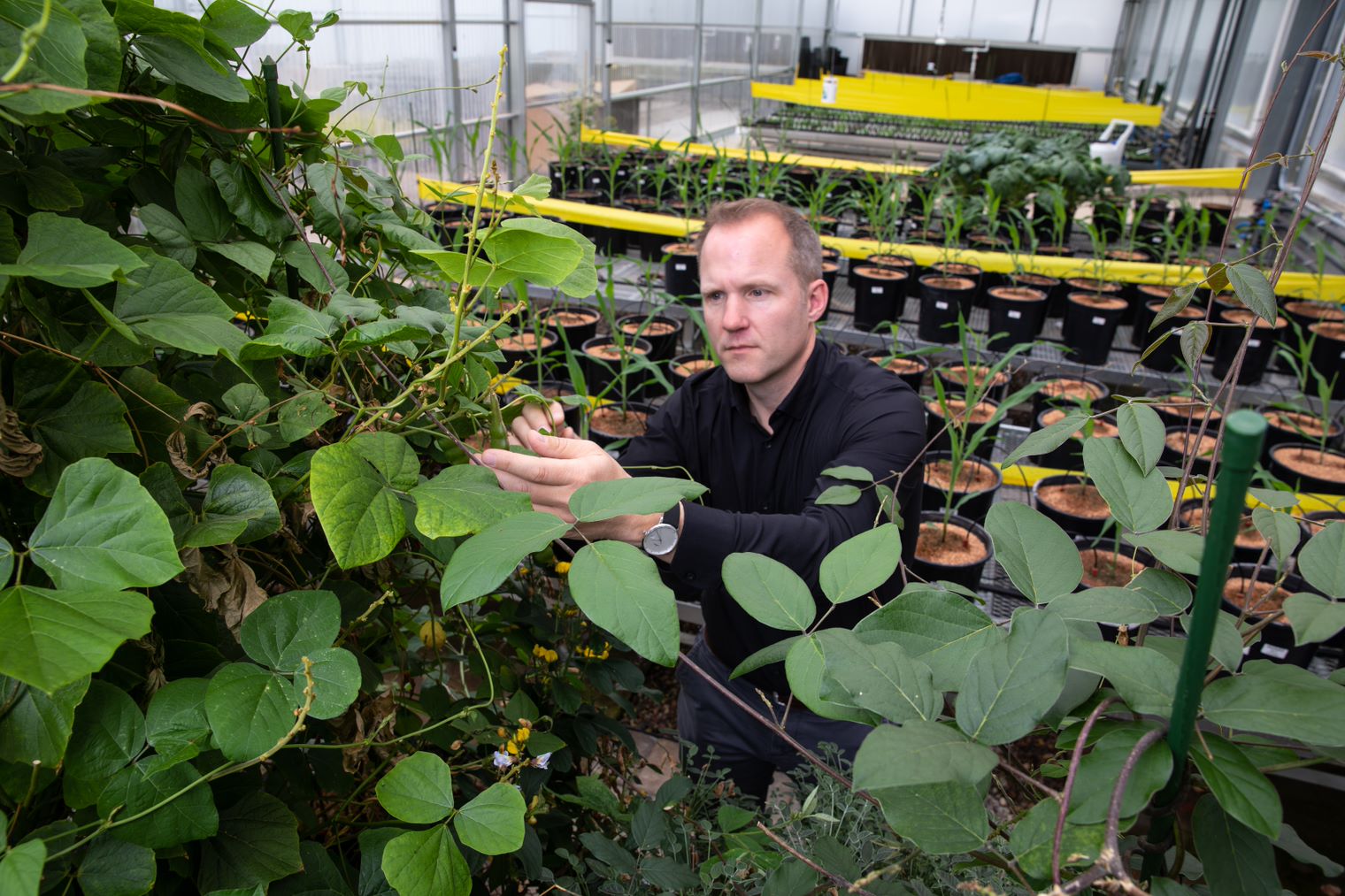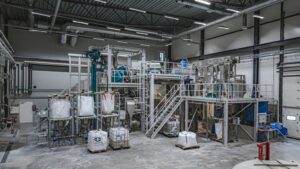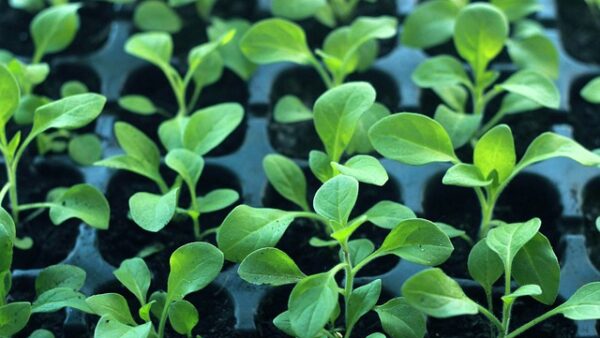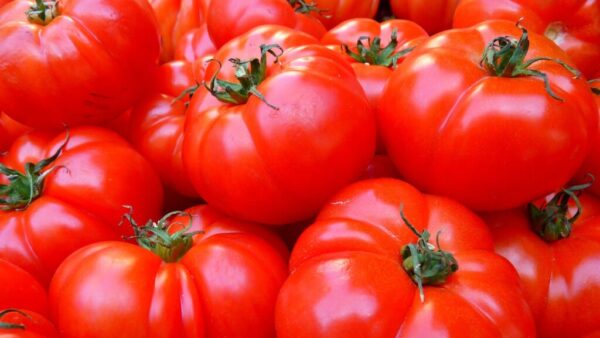Texas A&M AgriLife Research scientists will soon be looking deep beneath agricultural row crops to determine what makes them stronger, higher yielding and more adaptable, as well as what they offer in the area of climate change mitigation.
Dirk Hays, AgriLife Research plant geneticist in the soil and crop sciences department at College Station, will lead a “Ground-Penetrating Radar (GPR) for Enhanced Root and Soil Organic Carbon Imaging,” project, funded by a $4.6 million, three-year grant from the U.S. Department of Energy’s Advanced Research Projects Agency-Energy.
This segment of DOE, according to the grant, funds technologies that show technical promise and potential for commercial impact, but are too early in their research and development for private-sector investment.
Specifically, Hays said, DOE is interested in how large biomass root systems can contribute to the building of root-derived soil organic matter while sequestering and allowing carbon dioxide to be stored in the ground and used for climate change mitigation.
Hays said his past research has used ground-penetrating radar to phenotype roots in wheat, sorghum, cowpeas and other crops. On Feb. 1, he and a team of AgriLife Research and Texas A&M University scientists will start looking at high biomass energy crops, specifically perennial sorghums and millets.
“We have not been able to use ground-penetrating radar or any other nondestructive system to select for ideal root systems in the past,” he said. “GPR has only minimally been used in crop systems. So this will be the first large body of work using GPR for crop root systems.
“We know it has limitations to see fine roots in heavier soils, but our goal is to take the technology as far as we can to see finer structure and at deeper depths.”
Through the project, AgriLife Research is tasked with developing ground-penetrating radar antenna arrays for three-dimensional root and soil organic carbon imaging and quantification, he said.
Other AgriLife Research and Texas A&M scientists at College Station on the project are: Dr. Russell Jessup, perennial grass breeder; Dr. Frank Hons, soil scientist; Dr. Nithya Rajan, agronomist; Dr. Haly Neely, soil scientist; Dr. Ben Wu, rangeland ecologist; Dr. Michael Bishop, geosciences professor; and Dr. Ron Lacey, biological and agricultural engineering professor.
Outside major collaborators are Alexander Novo and Enrico Boi with IDS Georadar, the manufacturer of the ground-penetrating radar equipment to be used; and Dean Goodman with Geophysical Acheometry Laboratory in California, who is responsible for developing the software for analyzing the data gathered by the radar.
Hays said the visualization of root traits in soils could enable breeders to select climate-resilient bioenergy and other row crops that provide higher yields, require fewer inputs, improve soil health and promote carbon sequestration through increased root-derived soil organic matter.
There are existing instruments, but they are not designed for row crop root imaging, he said. There is a need to optimize the frequency of the radar and the geometry or multi-array radar antennas and make crop-root GPRs commercially available.
“Previously, we’ve worked with smaller root systems. Now we’re looking at the larger mass root systems,” Hays said. “We need to build on the methodology of analyzing these root systems.
“If we can image them non-destructively, we can actually breed for the traits that make the plants more adaptive to Texas conditions.” he said.
The crops for the project will be planted in the College Station, Beeville, Lubbock and Stephenville areas to provide opportunities to measure root systems in different soil types.
“We know GPR doesn’t work well in heavy clays; the ability to discriminate root-radar return signals versus heavy clay signals is difficult,” he said. “We hope our methodologies and GPR instrument design will help us quantify the root mass and structure better even in the heavier soils.”
Hays explained that by quantifying the root production on different crops in different soils, researchers will be able to guide breeders and producers toward more efficient crops and management practices.
“We know there are genetic lines with roots that are responsive to cultural practices,” he said. “We want plants with deeper, more adaptive root systems for later crop development. Under deficit irrigation, some genotypes will have roots that go deeper to find the moisture, while others won’t. If we can determine which ones are doing that, we can breed those traits.
“This requires our ability to image and quantify roots throughout the crop cycle using a non-destructive technology such as GPR.”
In another study, Hays said adding either high rates or no phosphorus to a black-eyed pea crop made no difference in the root system, but adding just a trace amount made the root system significantly larger and deeper, which in turn made the plant more drought-resistant.
“That happened to be genetic-line specific, and likewise, root adaptation to drought stress is also likely common among most crops,” he said. “As such, if we can image with ground-penetrating radar, we can breed for that kind of trait more effectively and, in turn, reduce fertilizer and irrigation demands.”













